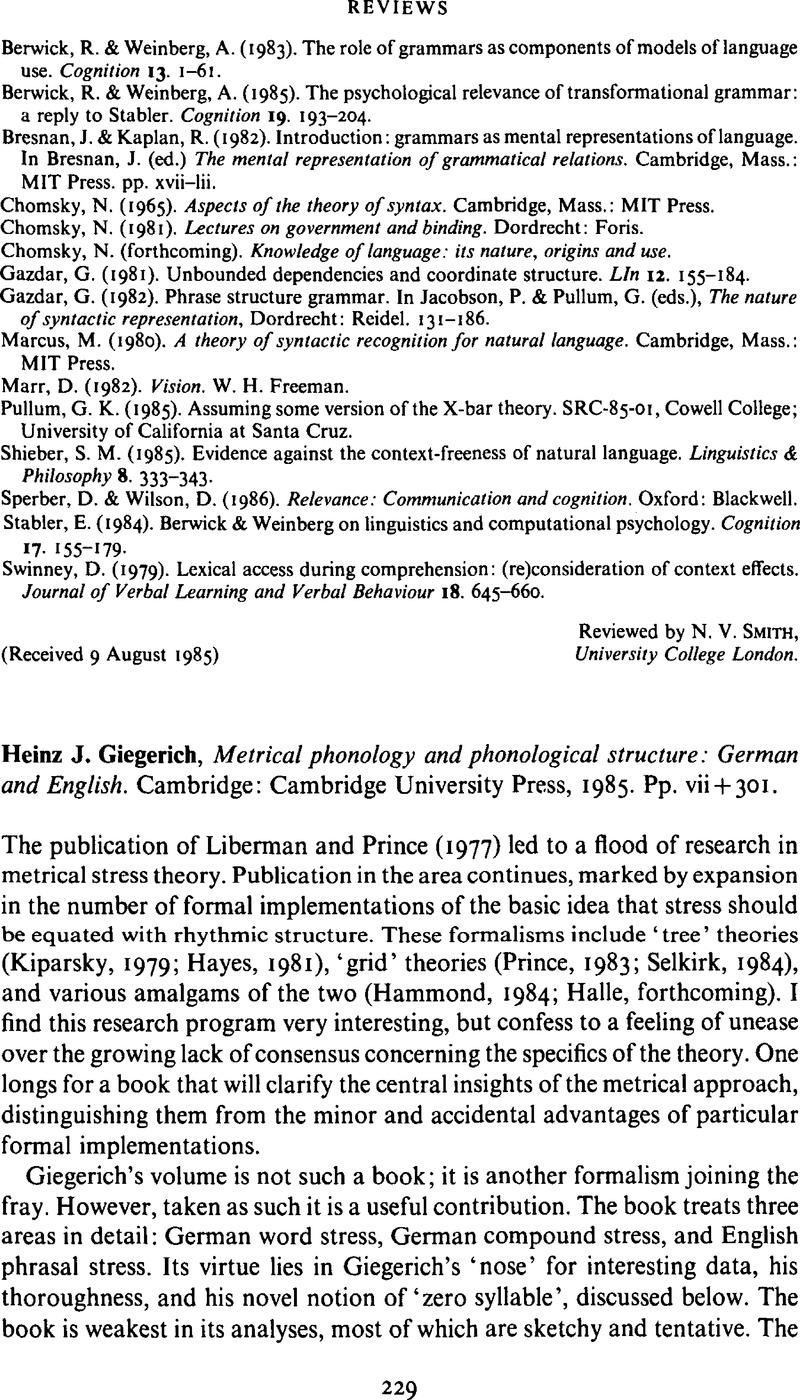Crossref Citations
This article has been cited by the following publications. This list is generated based on data provided by Crossref.
Jessen, Michael
1988.
Metrical phonology: A coursebook.
Lingua,
Vol. 76,
Issue. 1,
p.
99.
Hall, Tracy Alan
1989.
Lexical Phonology and the distribution of German [ ç ] and [ x ].
Phonology,
Vol. 6,
Issue. 1,
p.
1.
Speyer, Augustin
2009.
On the Change of Word Stress in the History of German.
BGSL,
Vol. 131,
Issue. 3,
p.
413.



